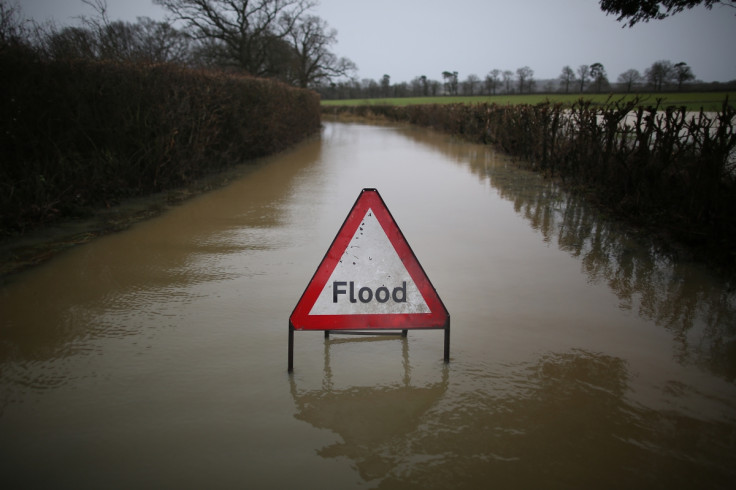UK weather: 2014 flooding a result of climate change as humans increased risk of storms by 43%

The January 2014 flooding in the south-west and north-east of England was due to man-made climate change, say scientists from Oxford University. They say the stormiest period of weather the UK has experienced over the past 20 years occurred as greenhouse gases increased the risk of adverse weather.
The study, published in Nature Climate Change, found that the risk of such an event increased by as much as 43% due to anthropogenic greenhouse gases. This is the first study which analysed data on the stormy period across the entire country, from the beginning of the storms to the very end. It was found that there were two main reasons for the flooding and storms of late 2013/early 2014. They say that a third of the increased risk was due to more January days with a westerly air flow.
Two thirds of the risk was due to increased water-holding capacity of the atmosphere. If more water is being held, more will fall when it is eventually dropped as rainfall – similar to the difference of a small bucket of water, and a large one.
"We found that extreme rainfall, as seen in January 2014, is more likely to occur in a changing climate," said Nathalie Schaller, lead author of the study. "This is because not only does the higher water-holding capacity lead to increased rainfall, but climate change makes the atmosphere more favourable to low-pressure systems bringing rain from the Atlantic across southern England."
Models were created to simulate the weather for January 2014 based on the current climate – with large amounts of anthropogenic greenhouse gases – and a climate which humans had no influence over. Data from the Weather@home citizen-science project were used to find the results, a programme which models climate using spare processing power from volunteer's computers. More than a hundred thousand simulations were run, and the scientists say that climate change was to blame for the storms.
Alison Kay, researcher on the study said: "Our hydrological modelling suggests that the increased likelihood of extreme rainfall arising from man-made climate change gives a more modest increase in extreme flows in the River Thames."
They also discovered that the increased rainfall and water-holding capacity of the atmosphere ultimately increased the effect of climate change, too. That is to say that the more greenhouse gases, the more rainfall – which also means enhanced climate change effects, which goes on again to more rainfall. It is an endless circle.
At least 6000 properties were flooded during the stormy period, and waves were reported around the south-west reaching 25m in height – more than five times the height of a double-decker bus.
© Copyright IBTimes 2025. All rights reserved.






















